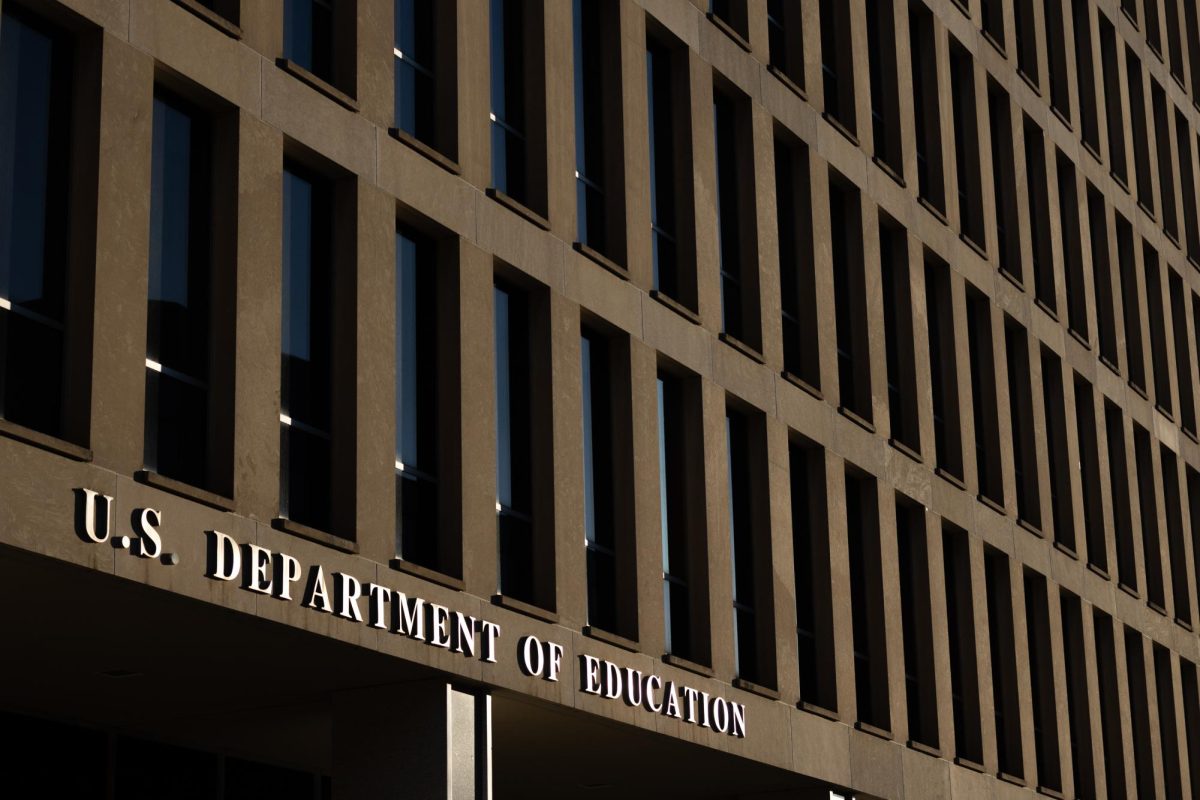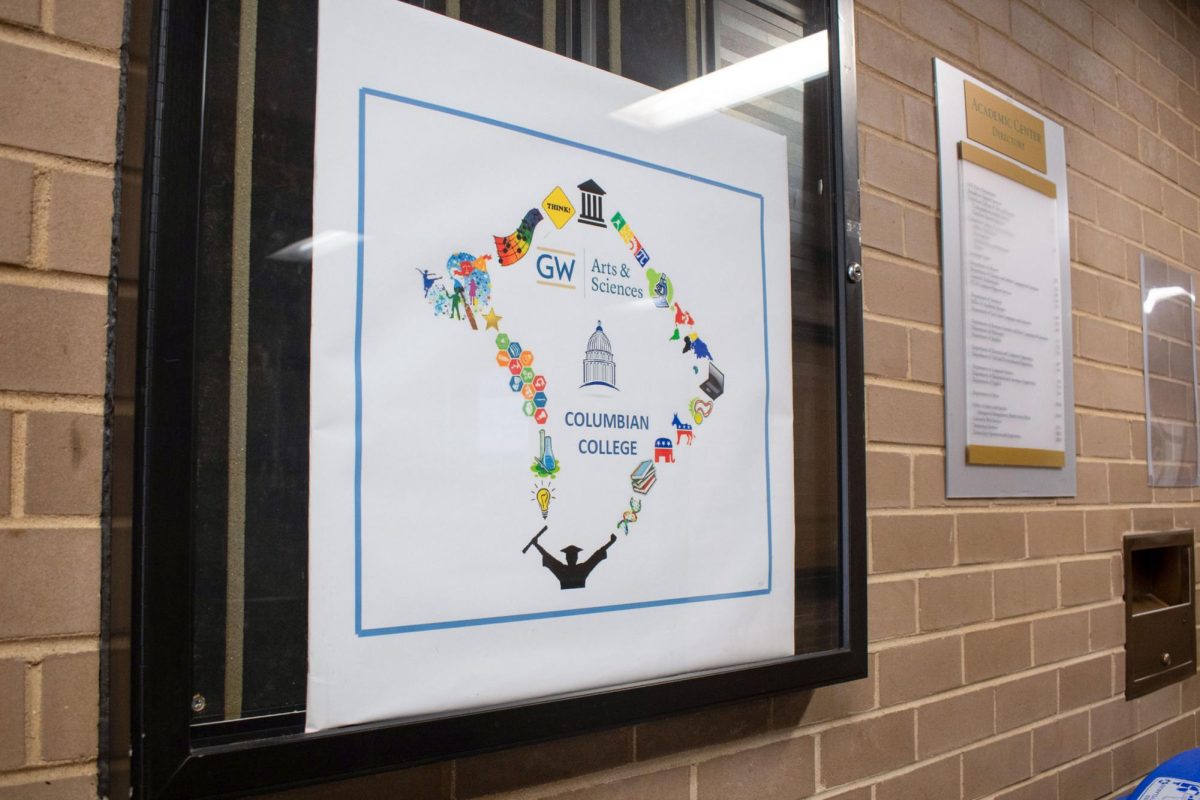
The University has spent more than half a billion dollars building up the Foggy Bottom Campus in the last six years, and as cranes loom over almost every block, the construction costs are becoming a financial stressor.
After D.C. approved an expansive campus plan in 2007, GW has erected and renovated academic buildings, residence halls and commercial properties, swelling debt nearly 80 percent to about $1.4 billion – slightly topping the University’s endowment.
Development costs so far add up to $571,850,000. GW’s perfect credit rating is brushing up against trouble, with ratings agency Standard & Poor’s cautioning that the borrowing is tipping the University’s balance between revenue and costs.
S&P pointed to the debt load funding those capital projects, as well as the increasing amount of interest payments and spending to fix buildings’ wear and tear, as putting its credit rating “under pressure in the future.”
“We could consider a negative outlook or lower rating” if those metrics don’t improve, the January S&P report read.
But administrators maintain that the growth and debt – fueled by low interest rates and lower construction costs in the wake of the financial crisis – are investments to draw in higher-caliber students and professors.
GW has started or completed construction on about one-third of the two million square feet drawn up in the two-decade campus plan just six years ago. Eight projects are currently in the works, with construction on the massive “superdorm” starting this summer and the eight-story Science and Engineering Hall reaching its highest point this fall.
What comes next, administrators hope, is a decade of transformation. They see the science buildings and “superdorm” contributing to a more inviting, academically rigorous and research-heavy university, especially in the hard sciences, public health and engineering. While Executive Vice President and Treasurer Lou Katz said GW would not announce any new projects in the next year, there are 10 major projects left in the pipeline for the next 14 years of GW’s campus plan.
The University must receive approval for 70 percent of the square footage in the plan by 2027, or it must resubmit its building plans – putting the pressure on for more growth.
“I guarantee you: We’re not just gonna stop where we are now,” Katz said.
Buildings pile up, debt piles on
To sustain future growth, GW has grown its fundraising base and enrolled more graduate, online and international students who often pay the full sticker price of tuition.
For the first time last fiscal year, the University’s debt piled up past its $1.3 billion endowment – an intentional accumulation that will continue to fund more than half of what GW spends on construction projects through 2016, according to last year’s capital budget.
The spending patterns provoked S&P to warn GW of its shrinking net revenue, which is also funding increased financial aid and faculty salaries.
Last summer, the University was grouped in with 29 percent of other universities nationwide that are on an “unsustainable financial path,” according to a report by Bain & Company. The report also listed higher education titans like Duke and Georgetown universities as financially troubled, based on the change in institutions’ assets compared to their liabilities.
“Many institutions have operated on the assumption that the more they build, spend, diversify and expand, the more they will persist and prosper. But instead, the opposite has happened: Institutions have become overleveraged,” the Bain report read.
Donald Parsons, an economics professor and member of the Faculty Senate, has consistently raised skepticism about the University’s financial plans on construction projects. He said GW has used low interest rates as a crutch, but they will no longer be stabilized in the coming years.

“The day’s going to come when we aren’t going to have zero interest rates,” he said. “Once the rates go up, as they inevitably will, they’re going to find that they’re in serious trouble.”
The University plans to use $37 million of its endowment payout to fund the construction through 2016 – money that could go toward operating costs like faculty salaries or financial aid. It’s also taken out loans with fixed interest rates, lowering its risk of having to pay more in future years.
The next large projects will likely be funded by a big jump in research dollars or real estate earnings, like the ones that the University would take from the office buildings it is expected to redevelop on Pennsylvania Avenue, Katz said.
Katz called the spending on capital projects “a balanced approach,” and an investment that will help the institution’s academic and research stature. Even the recession did not slow GW, as Katz said cheaper contracts as a result of the construction slowdown actually accelerated the University’s pace.
GW has also spun some formidable development moves, especially now that it pulls in $9.1 million annually in rent money from The Avenue.
“You know – what we’re trying to do is continue the growth in our capability from a financial perspective, and from the use of campus perspective, so that we have the ability to do those things if it’s the right opportunity and the institution continues to grow,” Katz said.
Despite that, the University has held onto its top credit rating and administrators have no plans for additional debt, at least through the next fiscal year. The debt is cheap, as low interest rates have made borrowing more appealing across the country. The University-wide committee to cut expenses, the Innovation Task Force, has also helped find $34 million in added revenue or slashed costs since 2009.
The spending binge has also avoided digging deeper into students’ wallets. GW has kept its fixed tuition on track, as undergraduate tuition has recently only increased steadily for new students by about 3 percent each year.
A national push to upgrade, grow out college campuses
GW’s borrowing tendencies have also been mirrored nationwide, as debt doubled at the 281 private universities rated by the credit ratings agency Moody’s between 2000 and 2011. Much of that has gone into construction, as college campus construction increased threefold to 32.6 million square feet between 1990 and 2008, according to a McGraw-Hill construction report.
Peer institutions like Duke and New York universities have also turned toward amassing debt to fund projects, totaling more than $2 billion each last year, though those schools have much larger endowments than GW.
Some of that spending has been to spruce up academic facilities, but plenty has been to fund new, upscale residence halls, said David Jacobson, a communications strategist for Moody’s.
“Back when I went to school, you were fine living in a dorm with a communal bathroom and a communal TV. Students today, that won’t satisfy it for them,” he said. “They need a private suite and Wi-Fi access.”
But, Jacobson added, GW earned its A1 rating because the agency believes it reflects the borrowing that has pervaded higher education and will be stable in the long term.
“When the recession hit, a lot of universities scaled back on their capital investments, so with interest rates as low as they are, there’s a pent-up demand that they have to catch up to it,” Jacobson said.
A campus plan in bloom
The head of the campus development office Alicia Knight spent her own college years at GW 14 years ago, and said the campus where she lived would be unrecognizable to current students.
When Knight stepped off the escalator of the Foggy Bottom Metro station as a student, she saw a parking lot instead of the GW Hospital. Around campus, buildings like South and Duqués halls did not yet exist, and the Smith Center looked “very, very different than it is now,” said Knight, who now steers construction projects as the senior associate vice president for operations.
“It’s hard to even compare,” she said about changes to campus over the last decade and a half.
Construction comes as the University has aimed to elevate its prestige as a research institution, attracting top-notch faculty and students and developing a stronger focus on scientific innovation. Knight said the new 400,000-square-foot Science and Engineering Hall will offer an environment to catalyze that effort.

“It’s not about the number of square feet. It’s about what’s in the room and how is it facilitating teaching,” Knight said. “By being able to renovate and put online new spaces that better meet today’s teaching and the way that students want to learn, I think, is the role that I can play in helping that come to fruition.”
The University tacked on a series of commitments to its 2007 Foggy Bottom Campus Plan, including an enrollment cap that limits GW’s urban campus to 16,553 full-time or full-time equivalent students, part of an effort to make the plan more appealing to permanent residents.
The University has also highlighted its contributions to the local economy to win over neighbors and city agencies as it marches through each stage of the development process. GW is the second largest private employer in D.C., behind Georgetown University, according to the Consortium of Universities of the Washington Metropolitan Area.
The recent large-scale campus projects come after University President Stephen Joel Trachtenberg elevated GW’s reputation as a commuter school during his 19-year tenure, building bigger, better residence halls and academic buildings like the Media and Public Affairs building. His predecessor, Lloyd Elliott, ushered an era growth as well, overseeing the construction of Gelman Library and the Smith Center.
But is this the largest construction boom of at least the last two decades?
“By a long shot, ” Katz said.







